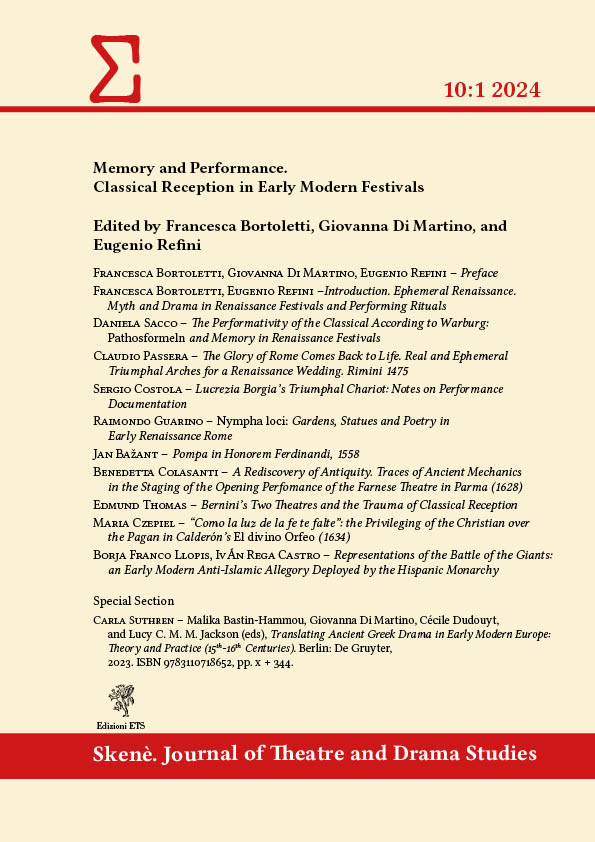Nympha Loci: Gardens, Statues and Poetry in Early Renaissance Rome
DOI:
https://doi.org/10.13136/d3wf5z86Abstract
This study addresses Nympha loci, the topos of the sleeping nymph as expressed in tangible and intangible form in the humanist gardens of early Renaissance Rome as shown in a confluence of texts, images, statues, epitaphs and epigrams. By collecting fragments of antiquities, humanists and cardinals pursued and shaped an environmental imitation of the Roman horti transposed into the Christian city. These were places devoted to the knowledge and celebration of ancient Rome. The collections were galvanised and enhanced by performances of drama, poetry and oratory, bringing together the political and spiritual values of the sodalitas for the Accademia Romana. The study also considers the transposition of theatrum and scaena within the context of the architectural inventions conceived for Villa Chigi and Villa Madama.
Keywords: nymph; humanism; gardens; Roman academies; collections
Downloads
Published
Issue
Section
License
Copyright (c) 2024 Skenè. Journal of Theatre and Drama Studies

This work is licensed under a Creative Commons Attribution 4.0 International License.
Open Access Policy
This journal provides immediate open access to its content on the principle that making research freely available to the public supports a greater global exchange of knowledge.
This Journal is a CC-BY 4.0 publication (https://creativecommons.org/licenses/by/4.0/). This Licence allows others to share the work with an acknowledgement of the work’s authorship and initial publication in this Journal, providing a link to the Licence and explicitly underlining any change (full mention of Issue number, year, pages and DOI is required).
- The Author retains (i) the rights to reproduce, to distribute, to publicly perform, and to publicly display the Article in any medium for any purpose; (ii) the right to prepare derivative works from the Article; and (iii) the right to authorise others to make any use of the Article so long as the Author receives credit as Author and the Journal in which the Article has been published are cited as the source of first publication of the Article. For example, the Author may make and distribute copies in the course of teaching and research and may post the Article on personal or institutional Web sites and in other open-access digital repositories.
- The Author is free to enter into separate, additional contractual arrangements for the non-exclusive distribution of the Journal’s published version of the work, with an acknowledgement of its initial publication in this Journal and explicitly underlining any change (full mention of Issue number, year, pages and DOI is required).
- The Author is permitted and encouraged to post their work online after the evaluation process has been successfully passed, as it can lead to productive exchanges as well as to a wider dissemination of the published work.

